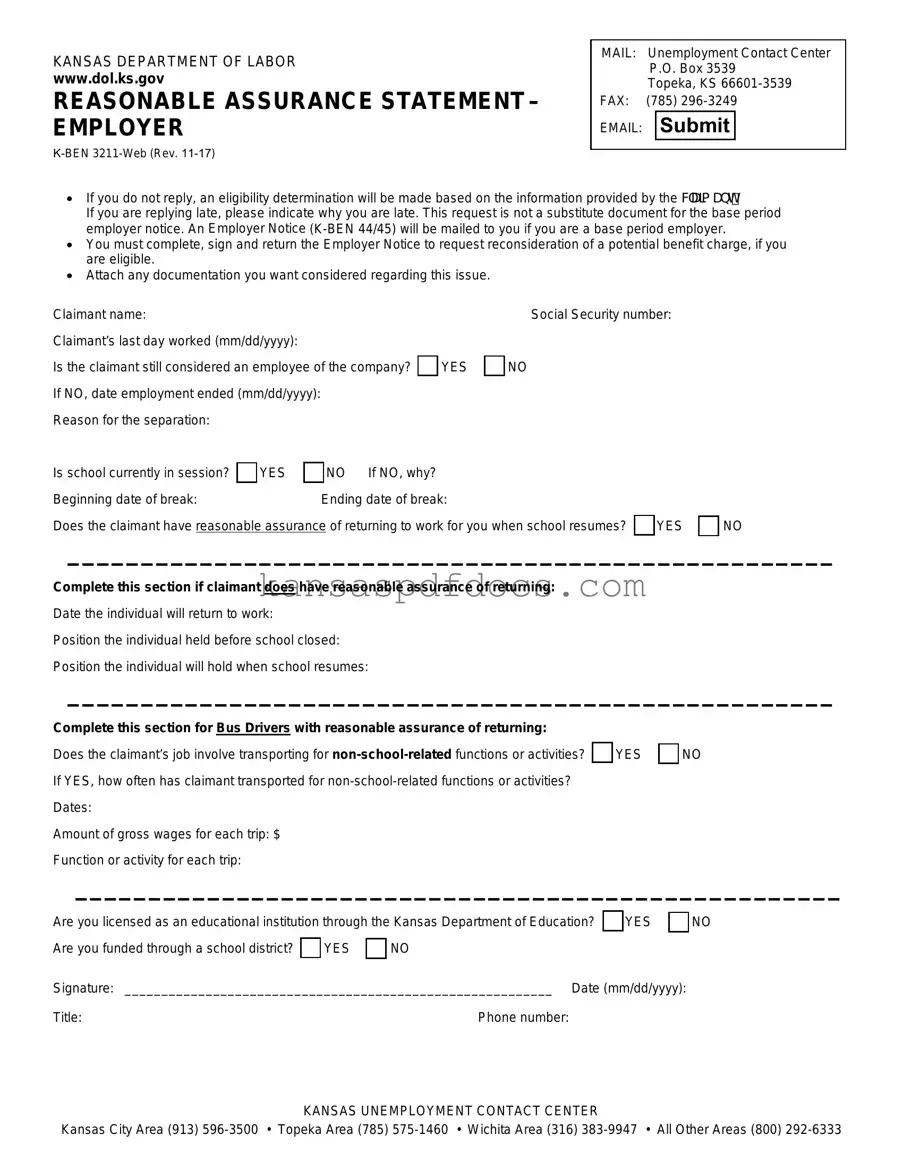The Kansas K Ben 3211 form, also known as the Reasonable Assurance Statement, plays a crucial role in the unemployment benefits process for educators and school employees in Kansas. This form is designed for employers to provide essential information about their employees' work status, particularly during school breaks. It asks employers to clarify whether an employee has reasonable assurance of returning to work once school resumes. Key details required include the claimant's last day worked, the reason for separation, and whether school is currently in session. Employers must also indicate if the employee is still considered part of the company and provide documentation if necessary. Additionally, for bus drivers, the form inquires about their involvement in transporting for non-school-related functions. Completing and submitting this form accurately is vital, as it directly impacts the eligibility determination for unemployment benefits. Employers must be diligent in their responses, as failure to reply can lead to decisions based solely on the available information. The K Ben 3211 form is not just a bureaucratic requirement; it serves as a bridge between employers and the state, ensuring that employees receive the benefits they may be entitled to during periods of unemployment.
